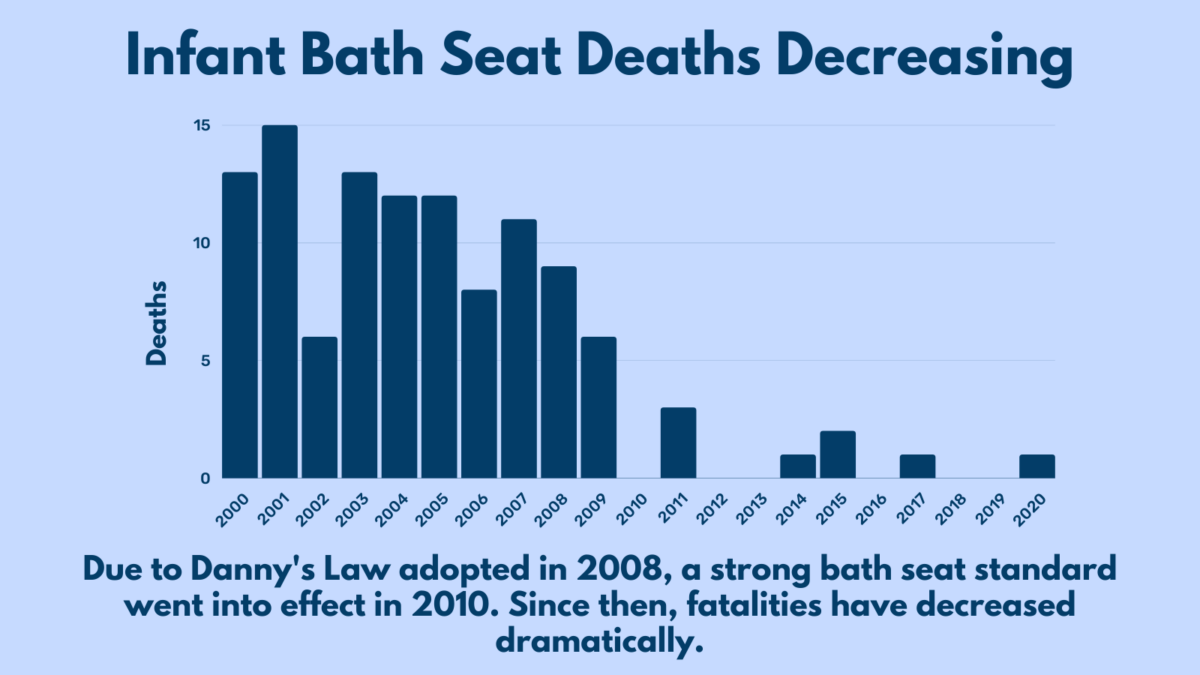Product Hazards – Bath Seats

Drowning is the third leading cause of accidental death in the U.S., and children under the age of five are at increased risk. Based on data from 2007-2009 in CPSC Nursery Product Reports, an average of 7 children die every year from the hazards of bath seats.
KID recommends against the use of all bath seats. These products are intended as bathing aids — NOT SAFETY DEVICES. It only takes a few seconds of time and as little as one inch of water for an infant to drown. Always keep babies within arm’s reach while near water. Consider using a small baby bathtub within the larger bath instead – make sure the main drain stays free.
Bath seats are dangerous for the following reasons:
- Bath seats give parents a false sense of security
- Children can slip out of the seats or tip forward or sideways into the water and become submerged
- The suction cups on the bottom of a seat can detach from the tub, and the baby can tip over and become trapped underwater by the seat
As the dangers of bath seats became evident, KID and other consumer groups across the country petitioned CPSC to ban baby bath seats, which are known to have been involved in at least 103 deaths and over 100 non-fatal incidents. CPSC now has a mandatory standard in place that will address the most common hazards of tip-over and the child slipping under water through the leg holes. There are currently no baths seats that meet the new standard.
The graph above shows how important strong mandatory standards are to protect children from potentially hazardous products. Fatalities due to infant bath seats dramatically decreased after the mandatory standard was put in place.

Statistics from CPSC data
More Information on Bath Tub Seats
- CPSC Votes to Begin Rulemaking to Improve the Safety of Baby Bath Seats CPSC News Release 01-163
- The Role of Bathtub Seats and Rings in Infant Drowning Deaths published by The American Academy of Pediatrics.
Report an Injury or Incident to SaferProducts.gov
Do you have a product injury or incident to report? Use the button below to contact
SaferProducts.gov and help other people avoid similar experiences.

